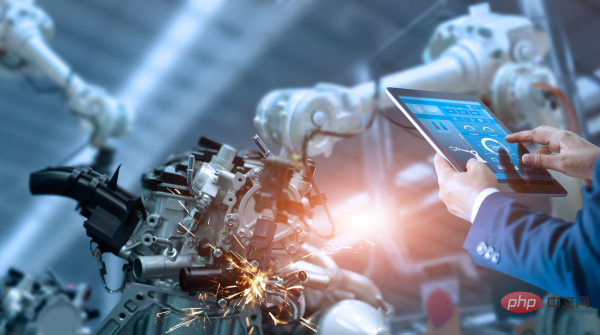Home >Technology peripherals >AI >How to choose RPA or BPA for automation projects based on enterprise needs?
How to choose RPA or BPA for automation projects based on enterprise needs?
- PHPzforward
- 2023-04-22 11:04:081374browse

When talking about digital transformation and modernization of business processes, automation is mentioned. Automation can improve business efficiency, thereby improving productivity, reliability, availability and business performance.
Gartner claims that more and more enterprises will invest in hyperautomation projects in 2022 to improve efficiency and provide customers with a better digital experience. These initiatives will include RPA and BPA.
Often, these two terms are used interchangeably as they attempt to achieve similar roles and goals in digital transformation. However, RPA and BPA also have significant differences. Understanding these differences can help determine which of these two automation approaches is better suited for your project.
RPA vs. BPA
Tom Taulli, author of "The Robotic Process Automation Handbook: A Guide to Implementing RPA Systems," explains how RPA evolved to automate tasks. He said, "RPA has been around for about 20 years, and it mainly comes from ordinary screen scraping. As we all know, the content on the screen can be moved, cut or pasted, and it can be placed somewhere else, which saves time. This will automate tasks.”
RPA has been evolving over the years to leverage machine learning.
Nandan Mullakara, strategic advisor and CEO of Innomatiq, said, “Most data still stays in documents. Most of the unstructured data in documents is digital. However, The data still needs to be read from the document. So, that's where artificial intelligence, machine learning, can help by extracting the data from the document so that it can be used by automated systems."
Taulli said RPA use cases range from automating invoice processing using optical character recognition to bots that help customer support representatives answer queries by providing timely information relevant to customer queries.
However, Mullakara said that while RPA does have its advantages, there are some use cases where it won't succeed.
He explained: “The problem with RPA is that it’s ahead of the user interface integration. But it also has its disadvantages because using a screen to get data, the screen may change or the application may Change or upgrade."
Mullakara said that from an API perspective, BPA still has a long way to go in terms of humans and other systems being involved in the process. Mullakara also recommends using BPA for long-running processes.
He said, "For complex business process automation, there are some long-running processes that need to maintain state while waiting for other tasks to complete. So, this process usually spans enterprise boundaries, usually It's an end-to-end process, so things like order caching, procure-to-pay. These are end-to-end processes and complex business processes, and BPA is used for automated processes."
Additionally, BPA is also useful for case management, where unique situations with complex interactions occur, such as managing certain end-to-end cases in healthcare.
Will RPA or BPA eliminate people’s jobs?
Mullakara said the overlap between BPA and RPA is in eliminating human intervention to process Multiple automation.
He said, “The whole idea of BPA is to remove people from the process, which is also the goal of RPA. In a simple workflow automation sense, it can do both .RPA is implemented through user interface integration, while BPA is mainly implemented through API. By calling the system to automate the workflow of the system."
However, Taulli explained that at this point, Automation really won’t get rid of human control.
Mullakara believes that this messaging around BPA and RPA is a common misconception and has given both technologies a pretty poor rap.
He said, “So what enterprises are actually using RPA to automate is the task, not the job. Even if it is a process, it is not a complete job. So we still It takes people to do it."
As we move towards the age of hyper-automation, automation and humans can be excellent partners in many use cases and work together seamlessly to help make tasks and processes easier and more efficient.
I think it will all come together in a great way to actually allow machines or circuit boards or automation to do jobs that people don't like to do, Mullakara said , or things that robots can do better and provide some jobs for humans that are more in line with humans."
The above is the detailed content of How to choose RPA or BPA for automation projects based on enterprise needs?. For more information, please follow other related articles on the PHP Chinese website!
Related articles
See more- Technology trends to watch in 2023
- How Artificial Intelligence is Bringing New Everyday Work to Data Center Teams
- Can artificial intelligence or automation solve the problem of low energy efficiency in buildings?
- OpenAI co-founder interviewed by Huang Renxun: GPT-4's reasoning capabilities have not yet reached expectations
- Microsoft's Bing surpasses Google in search traffic thanks to OpenAI technology

